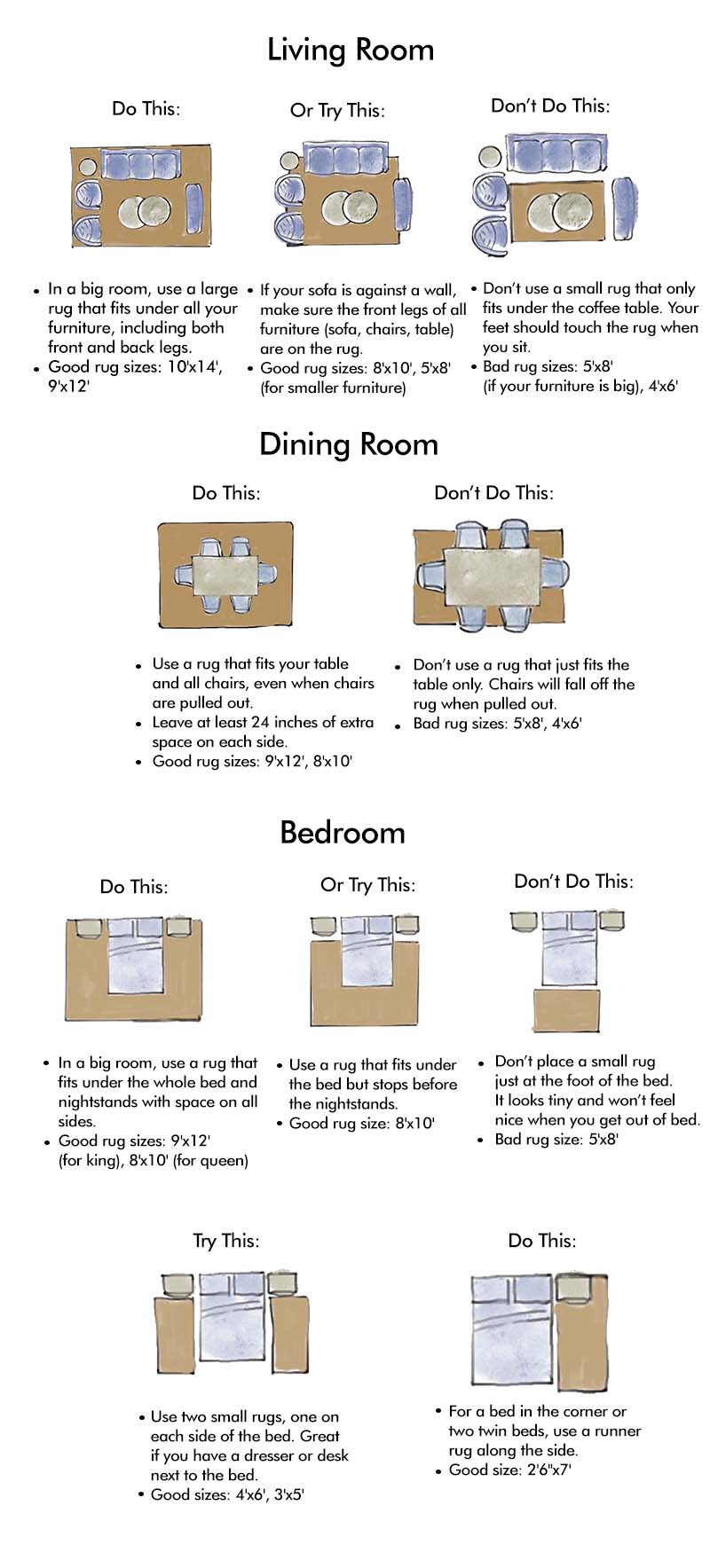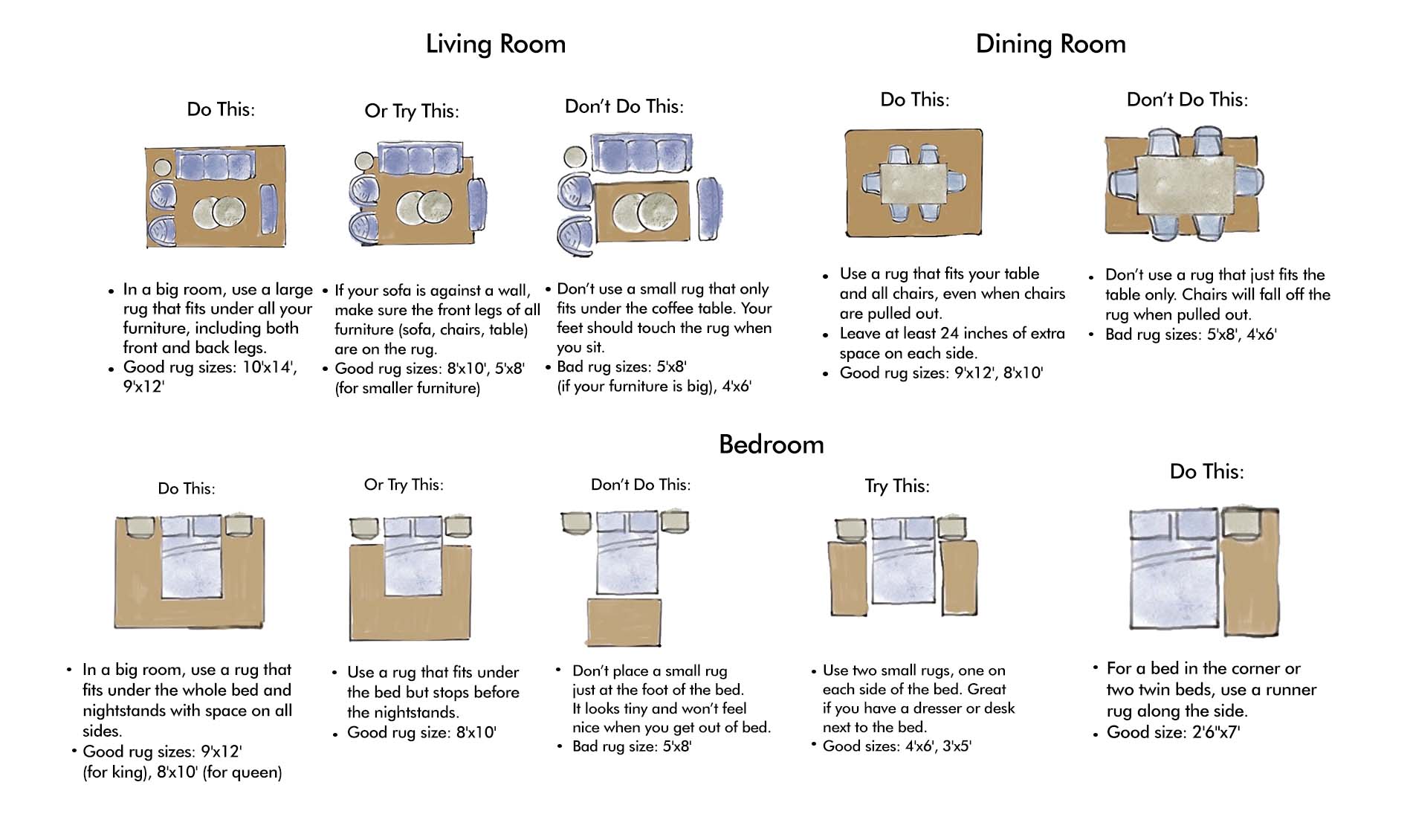Rug Size & Placement


Find the Right Fit for Your Space Choosing the right rug size transforms the entire feel of a room. Here's a quick guide based on standard room layouts.
LIVING ROOM
● Small (5x8 ft): Ideal under a coffee table with furniture legs off the rug.
● Medium (6x9 or 8x10 ft): Front legs of sofas and chairs on the rug. Creates a cohesive zone.
● Large (9x12 ft+): All furniture sits completely on the rug — the most grounded, gallery-like look.
DINING ROOM
● Match your rug shape to your table (round for round, rectangle for rectangle).
● The rug should extend at least 24 inches beyond all sides of the table so chairs remain fully on the rug when pulled out.
BEDROOM
● Queen bed: Use 6x9 ft rug horizontally under the bottom two-thirds of the bed.
● King bed: Use 9x12 ft for full coverage.
● Runner Option: Use two runners on either side instead of one large rug.
OTHER SPACES
● Entryways & Hallways: Use runners (2.5x8 ft or 3x10 ft) for warmth and definition.
● Corners or reading nooks: Use small 4x6 ft rugs to soften and anchor cozy spaces.
● Layering rugs: Place smaller statement rugs over larger neutrals for depth and personality.
Final Tip:
Bigger is better when in doubt. A rug that's too small can make your space feel disconnected — while the right size pulls everything together.
How to Measure for an Abstract Rug
1. Define the Functional Area First Start by marking the usable space you want to cover with the rug — not the exact shape of the rug itself.
● For living rooms: define the seating area or central zone
● For bedrooms: decide how far you want it to extend from the bed.
● For accent zones: mark out the “visual weight” zone you want the rug to anchor.
Tip: Use painter’s tape or chalk on the floor to block out the ideal area.
2. Use the Bounding Box Method Since abstract rugs don’t have fixed dimensions, measure the maximum length and width that the rug will cover — like drawing an imaginary rectangle around the abstract shape.
● Length: Longest point from one end to another
● Width: Widest point from side to side
● This gives you the bounding dimensions — the "footprint" of the rug
Example: If the widest part of your rug is 6 ft, and the longest part is 8 ft, then the rug size is roughly 6x8 ft (even if the shape curves inward)
3. Consider Visual Balance, Not Just Size With abstract shapes, balance is more important than symmetry.
● Leave equal breathing space on sides if placing under furniture
● Use the rug’s curves to your advantage — align one curve with a sofa arc, or contrast it against angular furniture
● Think of the rug as a piece of art — it should feel placed intentionally
4. For Layering or Corner Styling
If layering on top ofa larger neutral rug:
● Measure how much of the base rug you want visible
● Then position the abstract rug off-center or diagonally for movement
For corner spaces:
● Use a flexible tape measure to trace the perimeter you want to cover
● Then compare that with the abstract rug’s conto
